Inside a Real Malware Email: Dissecting a GuLoader Trojan
A deep dive into a real-world GuLoader malware incident disguised as a Swift payment request

Inside a Real Malware Email: How I got a GuLoader(aka CloudEyE) Trojan Disguised as a Business Payment
Introduction
I didn’t expect a cyber attack disguised as a Swift transaction to land in my inbox. But on July 10, 2025, I received a very polished email that claimed to be from a business contact, complete with official-sounding language, phone numbers, and even a company website.
The subject?
“Fw: Swift Copy:0008/025/05/06_dt.07/09/25 by SANWAR MAL SUREKA Insurance & Investment Advisors”
The message claimed to be from “Sreekumar K S” of Mor Aqua Fresh, referencing an overdue balance and requesting payment confirmation. It included a password-protected .lzh archive, presented as supporting documentation, and even provided a password for access — a tactic often used in legitimate financial correspondence.
At first glance, everything seemed in order: the email was polite, well-formatted, and included branding and contact numbers. But behind the professional facade lurked something far more sinister.

This was no payment request — it was a delivery mechanism for GuLoader, a sophisticated malware dropper often used to load Remote Access Trojans (RATs), credential stealers, and surveillance tools. What followed was a deep dive into obfuscation, memory injection, and the kind of social engineering that even seasoned professionals must stay vigilant against.
In this post, I’ll walk you through how I analyzed the threat, uncovered its behavior, and understood how it cleverly slipped past even Gmail’s robust security filters.
🦠 What is GuLoader?
GuLoader (also known as CloudEyE) is a popular malware loader first observed in 2019. It is commonly used to:
- Deliver second-stage malware
- Evade antivirus detection using in-memory injection
- Establish persistence while avoiding behavioural sandboxes and VMs
It typically arrives via phishing emails and employs techniques like:
- NSIS packing
- Shellcode obfuscation
- Process hollowing and memory injection
- Anti-VM/anti-debug checks
The malware is widely sold on underground forums and used by various threat groups due to its modularity and stealth.
Stage 1: The Email Lure
📧 Email Header Analysis
The email came from a legit-looking Gmail address (as21185@gmaildotcom) with valid SPF, DKIM and DMARC authentication.
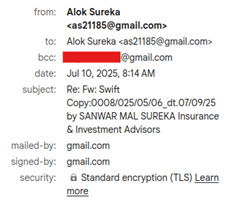
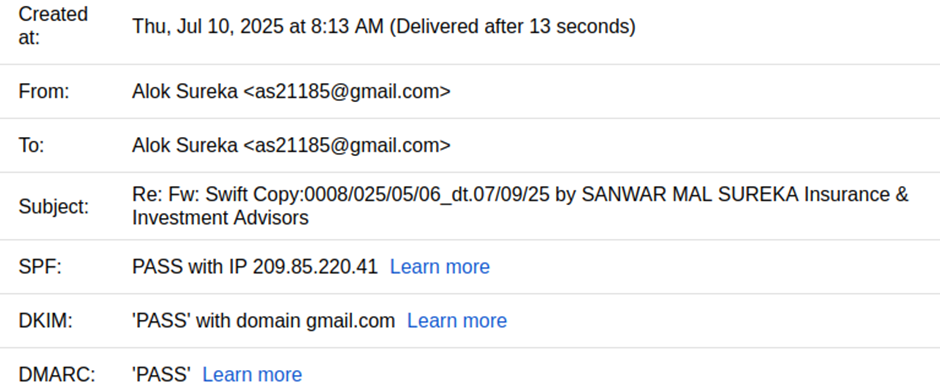
Why it was effective:
- Social Engineering: It used urgency and financial context (payment confirmation)
- Impersonation: Real-sounding names, companies and contact info
- Password-Protected Archive: Prevented antivirus scanners from detecting the contents
- Attachment Format: “.lzh” is uncommon, avoiding most signature-based detections
🚩 Red Flags:
- No prior relationship or context for the financial transaction
- Generic language and urgency to confirm payment
- Foreign messaging platforms (QQ, wechat)
- BCC delivery to hide recipient list and enable mass phishing
Stage 2: Static Information
📁 Archive Contents
Once extracted using the password, the “.lzh” file revealed a Windows executable:
Attached File
- Filename:
091208478 DTD 10.07.2025 09750913 640976289-85665.exe(inside .lzh) - Password:
310921680 - Type: PE32 executable (GUI) - Nullsoft Installer (NSIS)
- Size: ~1.2 MB
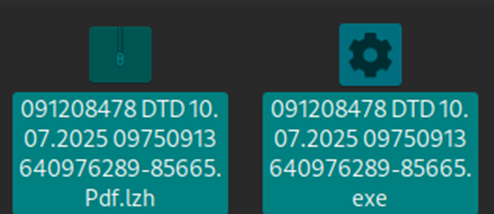
Metadata:
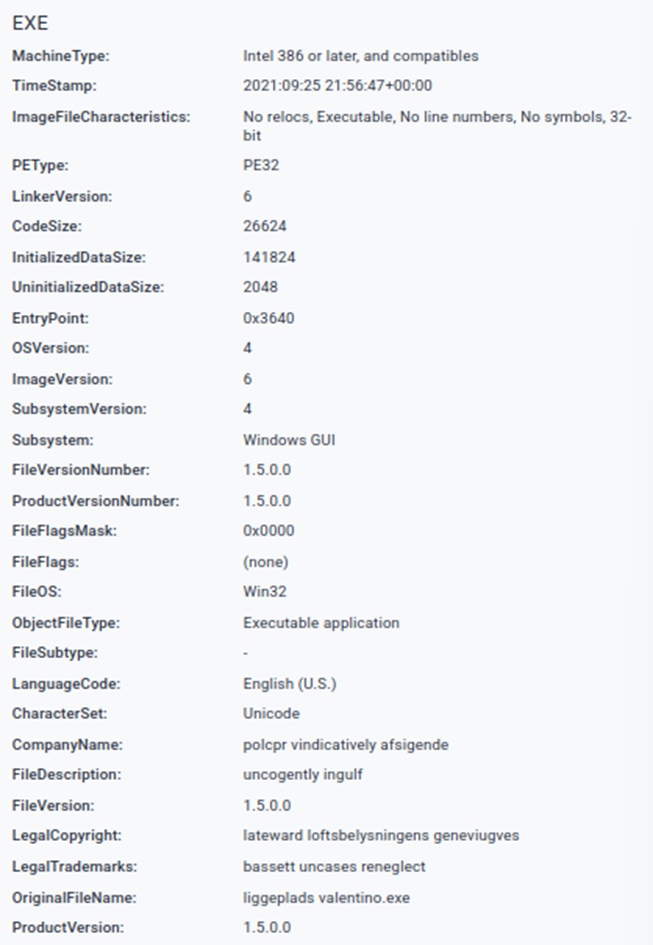
This is consistent with GuLoader characteristics – fake metadata, NSIS-based shellcode loader and packing to avoid detection.
TRiD:
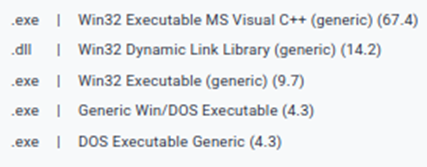
Stage 3: Dynamic Behaviour Analysis
Behaviour Summary (from Any.Run)
- Drops a DLL (
system.dll) to%TEMP% - Creates autorun registry keys for persistence
- Connects to suspicious external IPs on uncommon ports
- Uses
VirtualAlloc,WriteProcessMemory,Createthreadfor shellcode injection - Reads system & browser settings
- Executes secondary process (
wmlaunch.exe,slui.exe)
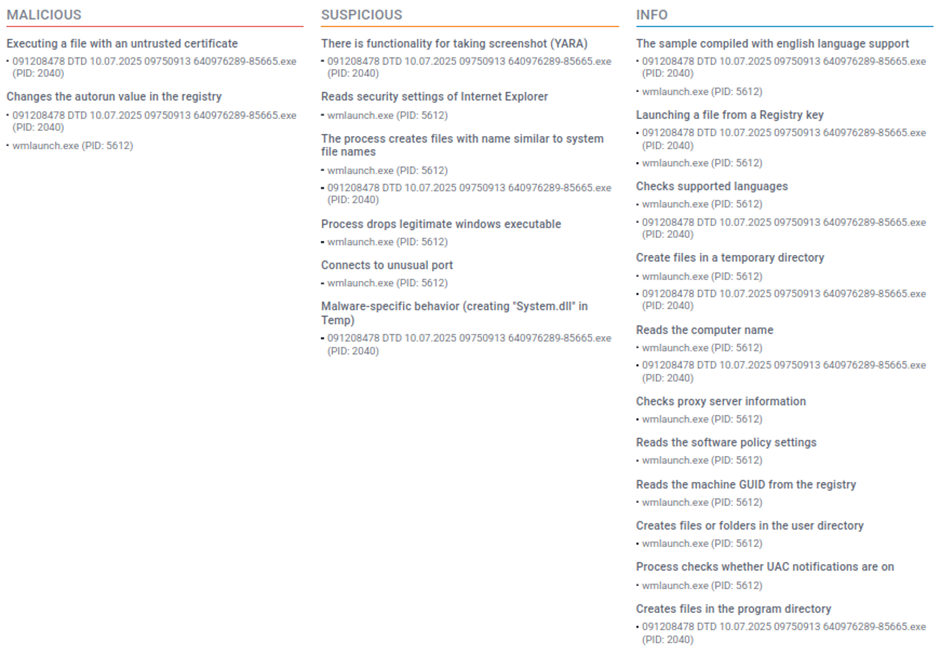
Technique Used
- NSIS Packing – To hide the real payload
- Shellcode Loader – Injects payload directly into memory
- Registry Persistence – Auto-runs on startup
- Anti-VM/Anti-Debug – Behaviour may change in sandbox environments
Stage 4: C2 Infrastructure & Payload Analysis
Although the report showed no plaintext C2 domain, analysis indicates that GuLoader:
- Connects to dynamic C2 domains over HTTPS
- Downloads and injects encrypted second-stage payloads like AgentTesla, FormBook or Remcos
Even without clear C2 in strings, the behaviour matches known GuLoader indicators:
- Process hollowing
- Memory injection
- Registry persistence
GuLoader is a loader trojan sold on underground markets. It’s widely used by threat actors to:
- Bypass antivirus
- Load info-stealers (AgentTesla, FormBook, etc)
- Maintain stealth (in-memory execution)
Detection Engines (from AV Scanners):
- Microsoft:
Trojan:Win32/GuLoader.RAZ!MTB - Kaspersky:
HEUR:Trojan.Win32.Makoob.gen - Malwarebytes:
Trojan.GuLoader - Symantec:
Scr.NSISHeur!gen3
Stage 5: Indicators of Compromise (IOC)
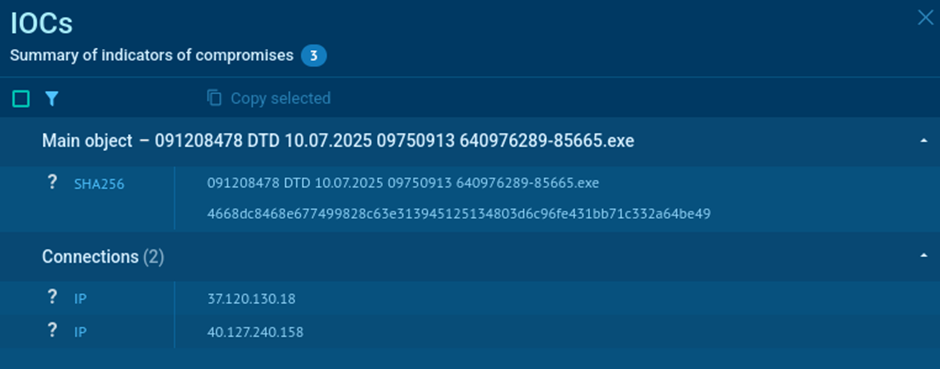
Hashes:
- MD5:
F54C3C32364C91454BEA24A1E6B98713 - SHA256:
4668DC8468E677499828C63E313945125134803D6C96FE431BB71C332A64BE49
Files:
%TEMP%\System.dllHKCU\Software\Locales ApproxHKCU\washoan\Uninstall\blodfattigsteHKCU\bowline\elice\lseplaners
Processes:
wmlaunch.exeslui.exe
Processes
- Monitored processes – 1
- Malicious processes – 1
- Suspicious processes – 1
Process 2040 –

Process 5612 –
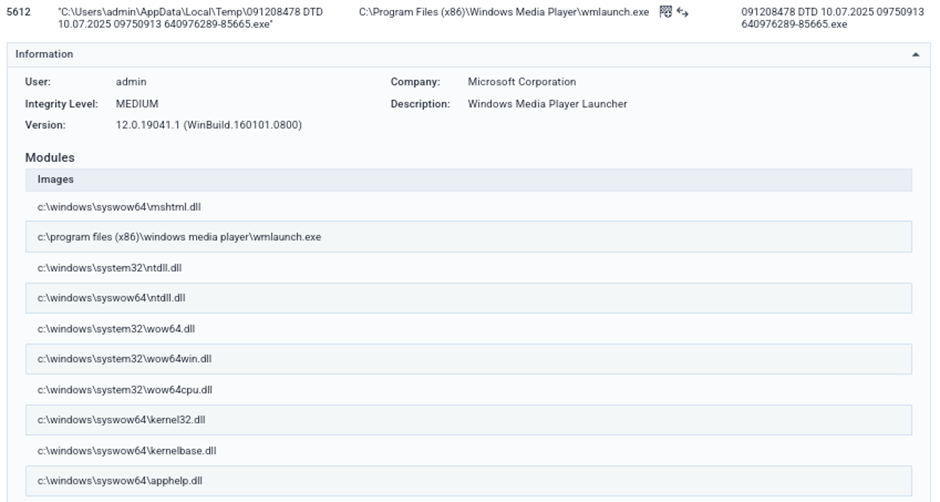
Process 7092 –
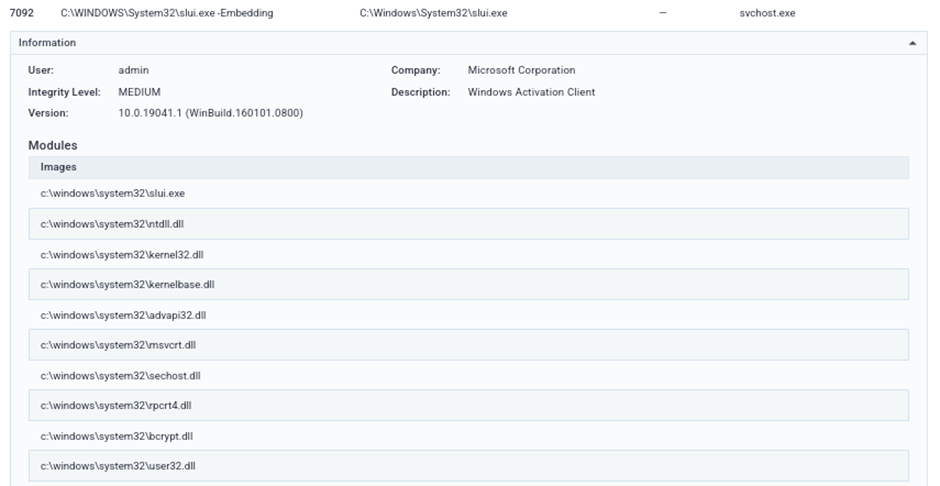
Behaviour graph

Conclusion
This real-world attack shows how easily cybercriminals can blend into daily business communication. The email successfully bypassed:
- Gmail spam/phishing filters
- Signature-based antivirus
- User skepticism — with professional formatting and emotional appeal
The payload, GuLoader, delivered stealthy second-stage malware using:
- Memory injection
- Process hollowing
- Registry-based persistence
This incident is a stark reminder that security is not just about technology — it’s about awareness. Even the most well-crafted emails must be scrutinized, especially when they include executable attachments.
Tools I used:
- Any.Run (Interactive sandbox)
- ExifTool (metadata)
- Strings/hexdump (static analysis)
- x64dbg (debugging)
- PEStudio, DIE, cyberchef
[LINKS]
- Any.Run link:
- Report link:
- Malware link:
(Use isolated virtual machine to run)
